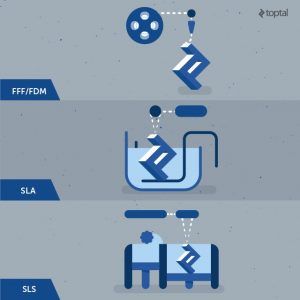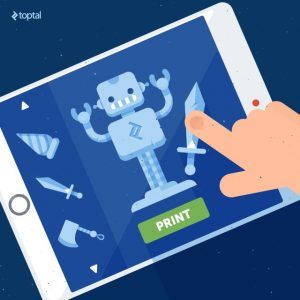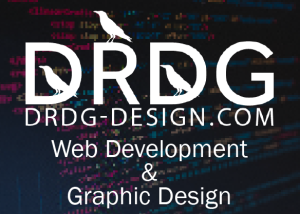
3D printing is not a new technology, but recent advances in several fields have made it more accessible to hobbyists and businesses. Compared to other tech sectors, it’s still a small industry, but most analysts agree it has a lot of potential. But where is the potential for freelance designers and software engineers?
A fellow Toptaler asked me this a couple of weeks ago, because I used to cover 3D printing for a couple of publications. I had no clear answer. I couldn’t just list business opportunities because this is a niche industry with a limited upside and mass market appeal. What’s more, 3D printing is still not a mature technology, which means there is not a lot in the way of standardisation and online resources for designers and developers willing to take the plunge.
However, this does not mean there are no business opportunities; they’re out there, but they are limited. In this post, I will try to explain what makes the 3D printing industry different, and what freelancers can expect moving forward.
3D Printing For Hobbyists And Businesses
First of all, I think we need to distinguish between two very different niches in the 3D printing, or additive manufacturing industry.
On one end of the spectrum, you have countless hardware enthusiasts, software developers and designers working on open-source projects. The RepRap project embodies this lean and open approach better than any similar initiative in the industry. RepRap stands for Replicating Rapid Prototyper and it’s basically an initiative to develop inexpensive printers based on fused filament fabrication (FFF) technology. Essentially, that is Fused Deposition Modelling (FDM) technology, but RepRap can’t use that name because it was commercialised by Stratasys. When the company’s patent on FDM expired, FDM was embraced by the open-source community, albeit under a different name.
3D printing is not a new technology, but recent advances in several fields have made it more accessible to hobbyists and businesses.
RepRap turned ten this year, with the first printers showing up a few years after launch. By 2010, the RepRap project was on its third generation design, and the RepRap community saw a lot of growth over the next few years.
One noteworthy feature to come out of the RepRap initiative is self-replication; the ultimate goal of the project is to create a 3D printer that will eventually replicate itself. We are not there yet, but some RepRap designs allow users to print three quarters of the printer. You still can’t print extruders and electric servos, but it’s a start.
However, RepRap was never supposed to be a commercial success. It was created as a tech-first initiative, so it was never consumer-centric. It was all about pioneering various technologies and bringing them to the hobbyist market at low cost. RepRap was never supposed to be a cash cow.
So what about big business? A number of industry pioneers have already become 3D printing heavyweights. These include Stratasys, 3D Systems, Ultimaker and Printbot. RepRap printers still command a big market share, and they’re not being squeezed out by proprietary platforms. In fact, most vendors have no choice but to embrace some RepRap standards in order to guarantee compatibility.
However, simply listing 3D printing companies and their respective market share does not paint the full picture. For example, RepRap is limited to FFF technology, which is the most widespread 3D printing technology today. The problem is that FFF printers have a lot of limitations, which means they cannot be used in many industries.
Different Technologies For Different Applications
To get a better idea of what’s out there, we need to take a look at currently available 3D printing technologies. This might not seem interesting if you’re not a hardware geek, but it’s important to understand the difference between various printing technologies (and I will try to keep this section as brief as possible).

Although hobbyist FFF printers are relatively inexpensive, certain types of professional 3D printers can cost as much as your home.
- FFF/FDM usually relies on thermoplastic “filament” heated by the printer extruder prior to being deposited on the print bed. Most FFF printers rely on ABS and PLA plastic filament, but the latest models also use polycarbonate (PC), high-density polyethylene (HDPE), high-impact polystyrene (HIPS) filament. Some even use metal wire instead of plastic, while others use sawdust to create quasi-wood objects. Some can even print food, chocolate, pasta and so on.
- Granular printers are different beasts since their material is not filament but, usually, powdered metal. These printers tend to be based on laser technology (although they don’t have much in common with your office laser printer). They use a powerful laser to selectively fuse granular materials. There are several ways of doing this: Selective laser sintering (SLS) printers fuse small metal particles by the process of “sintering,” while selective laser melting (SLM) printers melt the powder. Electron beam melting (EBM) printers hits metal powder with an electron beam in a vacuum environment
- Stereolithography (SLA) printers transform liquid raw material into solids using light. These printers have a number of advantages, in terms of accuracy and the ability to produce complex objects in a single pass, because SLA prints don’t require struts or supports, in most cases. The downside is that the choice of materials is very limited. They are usually exotic liquid polymers, and can’t be used to print metal or chocolate.
There are a few more 3D printing technologies out there, but I see no point in covering all of them for the purposes of this blog post.
The Challenge
So why aren’t we all playing around with 3D printers in our homes and offices? Why can’t we print objects the same way we print invoices, sheets and emails? 3D printing is not going mainstream any time soon, and here are some challenges and issues that need to be addressed first.
- Prohibitively expensive hardware
- Limited user base (compared to traditional printers)
- Immature technology
- Speed
- Price/performance, ROI
- Running costs
- Energy efficiency
With each new generation, entry-level 3D printers become a bit cheaper, but they are still too expensive for most potential users. It’s one thing to buy a $200 printer for your home or office, you’ll probably end up using it a lot, but the same isn’t necessarily true of 3D printers. How many people need to print documents, and how many need to print 3D objects?
Technology is improving, but serious limitations persist. 3D printers are still slow, are sensitive to all sorts of adverse conditions, their “printbeds” tend to be small (especially on inexpensive models), the choice of materials is limited and filament can be expensive.
The reason why businesses aren’t lining up to buy 3D printers is simple: ROI. 3D printers still can’t come close to traditional manufacturing methods in terms of speed, cost and energy efficiency. This does not mean industry isn’t going to shift to 3D printing in the future; we are already seeing some pioneering developments, but 3D printers won’t render traditional manufacturing techniques obsolete soon.
Still, there are some noteworthy exceptions. A couple of years ago, General Electric set out to design and build a new fuel injection nozzle for its next generation CFM LEAP turbofan engine, which is bound to end up in hundreds of airliners. GE eventually settled on 3D-printed titanium nozzles. The reason? The new 3D printed nozzle ended up 25 percent lighter than the previous design and consisted of a single part instead of 18 on the old nozzle. Durability is expected to be five times better. These nozzles will be used in engines manufactured in 2016 and beyond. GE hopes to produce more than 100,000 3D-printed parts by the end of the decade.
A team of GE engineers decided to create a working replica of one of the company’s engines, using a new granular printing technique dubbed “metal laser melting.”
Long story short, no, you won’t buy 3D-printed toys for $2 anytime soon, but you will fly on airliners powered by more efficient and reliable engines, made possible by 3D printing. There won’t be any 3D-printed chocolate in your local mall, at least not yet, but your dentist will tell you it’s probably not a good idea to eat chocolate anyway, right after you get your 3D-printed prosthetic.
There Is Another Way: 3D Printing Fulfilment Services
So, you have a great idea for a product, but first you need a small series of prototypes. Who do you call? Do you buy a bunch of 3D printers? Or do you simply send the design to a fulfilment service that will ship you the completed models in a matter of days?
Fulfilment services allow consumers and small businesses to take advantage of sophisticated 3D printing infrastructure without burning capital.
A 3D printing fulfilment service seems like a hassle-free choice, and that’s the direction the industry seems to be taking. Many 3D printing outfits have launched similar services and are collaborating with other industry leaders. One example of this symbiotic relationship is Stratasys Direct Express, which recently partnered with Adobe and enabled Photoshop CC integration, offering colour 3D printing for professional designers.
Google and Motorola didn’t invest billions in their own 3D printing facilities when they unveiled the Ara modular smartphone concept. They outsourced module manufacturing to 3D Systems. This example also underscores the potential flexibility of additive manufacturing: Ara is based around an alloy exoskeleton filled with various standardised modules that could be 3D printed. Since the modules have to connect to the exoskeleton, 3D Systems developed a new technique of depositing conductive materials within the printed components, which is a far cry from traditional 3D printer prototyping.
3D fulfilment services usually offer several different printing technologies, cutting-edge hardware and support. Why bother getting a $2,000 printer when you can simply send your designs to professionals and use any of a variety of professional printers, some of which cost more than your home? And let’s not forget about economy of scale; big services can and should offer a superior price/performance ratio compared to in-house printing.
In my opinion, this is the way to go. This straightforward business model has a lot going for it, and it’s hard to see how individuals and small businesses could compete on an even playing field. In terms of price, size and energy consumption, a professional 3D printer has more in common with a printing press than your LaserJet, and how many people need a printing press in their home or office?
3D Printing For Designers And Developers
What does all this mean for the average visual designer or software engineer? Will 3D printing change the way we do business? Will it enable rapid prototyping or even cheap small-scale manufacturing? When are we going to cook up some 3D-printed Barilla pasta for lunch?
I am afraid there is no simple answer because you can look at it from several perspectives. It all depends on your personal affinities and goals.
There are a few different ways designers and developers might become involved in 3D printing:
· Participation in open-source initiatives (RepRap)
· Use of professional design tools (Adobe CC)
· Integration of printing functionality to applications (Autodesk’s Spark 3D printing platform)
· Use of 3D printing fulfilment services
· Integration of 3D printing fulfilment services
Most open-source initiatives are geared toward individual, hobbyist users. They are also valuable for education, and they can foster a lot of innovation. The downside is that there’s not a lot of money to be made in this niche. It’s mostly a labour of love. The good news is that the bar is set pretty low; you can get an entry-level printer and loads of plastic filament for under $500. You can get a cheap and relatively good 3D printer for the price of a good smartphone.
Integration of 3D design and printing capabilities could prove more lucrative in the long run. Designers don’t have to go out of their way to experiment with 3D printing because it’s already accessible through leading software packages. Sooner or later, a client will start asking questions about 3D printed prototypes or small-scale production, so depending on your niche, it could be a good idea to do a bit of research.
We’re left with the elephant in the room: 3D printing fulfilment services.
Outsourcing 3D Printing Via The Cloud
On the face of it, fulfilment services seem to be the answer to everything. They put professional services within the reach of individuals, startups, and small businesses who otherwise couldn’t afford certain printing techniques, like laser sintering or stereolithography. They’re practically the only viable way of integrating 3D printing into a range of different services, mainly through cloud-based mobile and web apps.
So what are the downsides? There aren’t many.
Industrial scale fulfilment services are a relatively new concept. However, availability is still limited. Sure, if you need to print a few dozen titanium prototypes in California that won’t be a problem, but what if you need to do the exact same thing in Botswana or Bahrain? It will be more expensive because the manufactured designs will have to be shipped around the globe. On-site manufacturing sounds good, but it could prove prohibitively expensive
Of course, on-site manufacturing has a lot going for it; if a business needs to quickly iterate and revise designs, then the speed and convenience of 3D printer rapid prototyping can’t be matched by printing services. This is a relatively tight niche, but it’s by no means small. Design studios, architects, engineers, various maintenance departments, logistics, education; they all need on-site printers. Besides, if you need a printed replacement part on the International Space Station, you can’t exactly call Amazon. On another note, 3D printing in space would have made the exploits of the Apollo 13 crew look less impressive. No wonder NASA is already experimenting with them in space.
It’s worth noting that 3D printers can be used to print more than replacement parts and passive components. They can also be used to print working electrical components, ranging from speakers to printed circuit boards (PCB). PCB prototyping is a nice niche because traditional methods are slow and expensive. A 3D printer with a spool of conductive filament can usually do the trick on-site, on time, and on budget.
Still, as far as mass market applications go, chances are this space will be dominated by big players like Amazon, Stratasys, 3D Systems, and possibly Hewlett-Packard. As the industry matures, worldwide availability should become a non-issue, prices will go down and new hardware will offer new opportunities and superior quality.
In my opinion, the biggest problem the industry currently faces is the lack of use-cases. Sure, it sounds convenient, but who is it for? How do we get 3D-printed products into the hands of mainstream consumers?
This question is not as straightforward as it seems because additive manufacturing has been hyped in recent years. Just try googling for 3D printing use-cases and you’ll see what I mean: 3D printing seems to be the answer to all our problems, but in reality most of it is hype, based on long-term projections.
So, I decided to include research from an unbiased source: UK’s Intellectual Property Office. The paper, titled The Current Status and Impact of 3D Printing Within the Industrial Sector: An Analysis of Six Case Studies is extensive and examines the potential impact of additive manufacturing on several industries: automotive, domestic appliances, replacement parts, customised goods, reverse engineering, games and computer generated graphics.
Customised goods and CGI-derived designs stand out as the most realistic use cases for freelancers, so let’s take a closer look.
Personalised Manufacturing
One of the biggest advantages of additive manufacturing over traditional manufacturing methods is the ability to produce one-off designs or small series. How long would it take to create a plastic toy using traditional manufacturing? You’d need loads of equipment, cast dies and whatnot. With 3D printing, it’s just a matter of selecting a wireframe and clicking. This means it’s possible to produce unique designs, tailored to meet the needs of different customers.
Additive manufacturing can enable average consumers to design and customise various products prior to making a purchase. This can be done using professional desktop applications, or even web and mobile apps. Nobody expects the average consumer to design an item from the ground up, but even a child could customise a toy using a simplified mobile app.

The potential for personalised manufacturing is one of the key benefits provided by 3D printing.
Such a platform would have to include loads of different colour or decal options, along with the 3D wireframes themselves. What’s more, it should be possible to create modular designs, so if kids are customising a toy car or doll, they could choose between scores of different, but compatible, components that would be assembled to make the product.
Yes, instead of customising virtual environments in apps and games, kids born today will be able to personalise their real toys, or turn their video game characters into action figures. It kinda makes you wish you were born a couple of decades later, doesn’t it?
Here are a few personalised 3D printing use-cases with mass market appeal:
· Toys
· Custom jewelry
· DIY and hobbyist products
· Fashion and gadget accessories
· Personalised appliances and household items
However, products don’t have to be personalised to match your taste; they could also be made to perfectly match your physique, like a tailored suit. These products might not have the mass market appeal of personalised toys, but that doesn’t make them less exciting. In fact, I find them a lot more interesting than a customised brooch or doll.
Here are just some examples:
· Digital dentistry
· Surgery (mockups for training, 3D-printed replacement joints)
· Advanced prosthetics
· Tailored equipment and apparel for various professions
· Sports equipment and accessories
Sure, these applications don’t have nearly the same emotional appeal as the ones I mentioned earlier, but in the big scheme of things they could be just as lucrative and important, especially when you consider medical applications.
The Implications And Future Of 3D Printing
So what’s the bottom line? Will 3D printing change the industrial landscape? Is it really the next industrial revolution?
3D printing, or additive manufacturing, is a very promising, but immature, technology. It clearly has a lot of potential, but we’re still nowhere close to realising it even though the industry is seeing a lot of growth.
In fact, the market for 3D printing services, hardware, and materials, has been growing at a healthy double-digit rate for years. Most analysts expect the market to double by the end of the decade, passing the $10 billion mark. That may sound like a lot of money, but let’s put it in perspective: The same analysts expect annual smartphone shipments for 2015 to end up in the 1.3 to 1.4 billion unit range.
Looking past the hype, 3D printing is a technology with limited appeal, at least at this early stage. However, we will continue to see growth and development for the foreseeable future, backed by new use-cases. Many of these use-cases and business models will be based around 3D printing fulfilment services. This is good news for small businesses and individuals, because they will be able to use third-party infrastructure with relative ease. They won’t have to buy dozens of printers, they will simply integrate a few APIs to their platform and that’s it.
In the short term, this is the future of 3D printing, at least from a mass market perspective.


























